I’m back at home and hard at work processing images from the Olympus E-Pl1, the Leica M9 and even scanning some film! I bought an EL-CHEAPO scanner to try out, the Epson V500. My thought is that I wanted to see if I could even deal with scanning negatives and if so, i would sell the 500 and buy the 750 Pro or search for a used Nikon coolscan. I am surprised at the V500. When scanning at 2400 dpi the files are very very nice and they seem just as nice as my old Nikon Coolscan V I had years ago. I think I will end up buying the EPSON 750 Pro soon unless I find a nice used Coolscan model.
Anyway, before I sit down to hours and hours of staring at this glaring screen and writing my heart out I thought I would post a “just for fun” pop quiz! Below you will see two images side by side. CLICK ON THE IMAGE TO VIEW IT LARGER and then tell me which one you think is film, and which is digital. One of the shots below was shot with the Leica M9 and 50 Cron. The other was with the M6 and 50 cron using film and then scanned on the V500. The M9 image was converted from RAW. Both were shot at F2 and ISO 160. I may be posting a few of these side by sides just to see if you guys can guess. Should be fun 🙂
So which one is film? Which is digital? To me it’s easy to see the differences but at the same time, they are very similar. Just vote in the poll below and choose which one you think is FILM! I will post the answer this evening sometime! Also, feel free to leave a comment about which one you like the look of better and why.
I will say right now that the full size scan looks bad in comparison to the full size 100% M9 shot but my guess is that it is due to the scanner. I have used it for about 10 scans only and am still getting the hang of using a flatbed to scan film. BTW, if anyone has a NIkon coolscan V, 5000 or 9000 for sale let me know! OK, on to the images…
MAKE SURE YOU CLICK THE IMAGE BELWO TO SEE THE LARGER VERSION!
[polldaddy poll=3013655]
UPDATE:
Well, 533 votes today and 62% of you said that “B” was the film shot and it is indeed the shot taken with the m6 and film. I see a difference in the look but the M9 can pull loads of detail within its files. I’m having loads of fun with film and decided to order the Epson V700 scanner with a bunch of film. Provia, Velvia, Neopan, as well as a few other C41 films. The M6 makes for a great companion to the M9 when you want to get away from digital for a while. Shooting film feels good. It’s classic, it’s nostalgic and it’s fun. It also happens to be expensive and time consuming but also very rewarding. Me, I decided to shoot film for my personal use for a few months. No digital for me unless I am testing a camera or working. 🙂 I will be writing about the Epson 700 scanner soon as well as sharing images taken with various film stock. Of course my digital reviews will still be coming, and the next one up is the E-PL1 THIS WEEK!
Anyway, here are a few from today shot with Ilford XP2. I scanned these on the Epson V500 (which is for sale at $149 shipped, used for 3 hours today) and they look pretty good to me! I just want the 700 for the ability to scan more at one time.

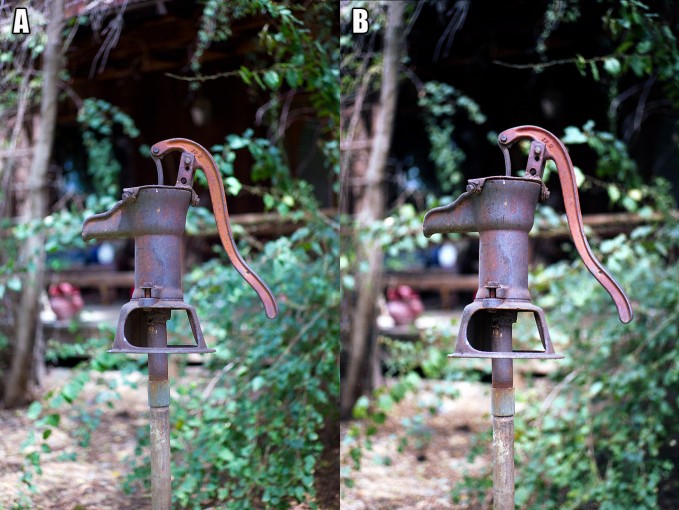
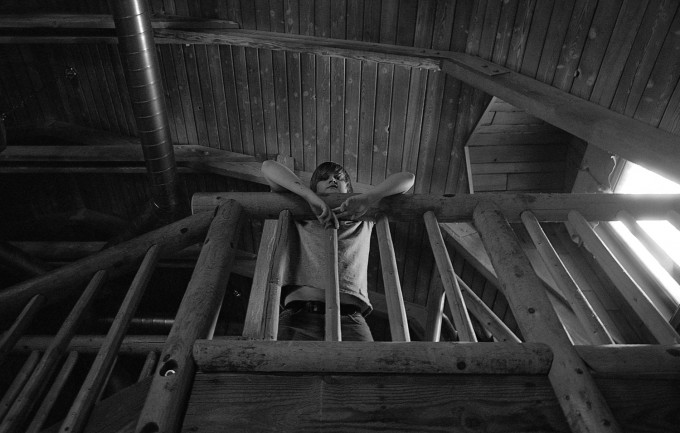
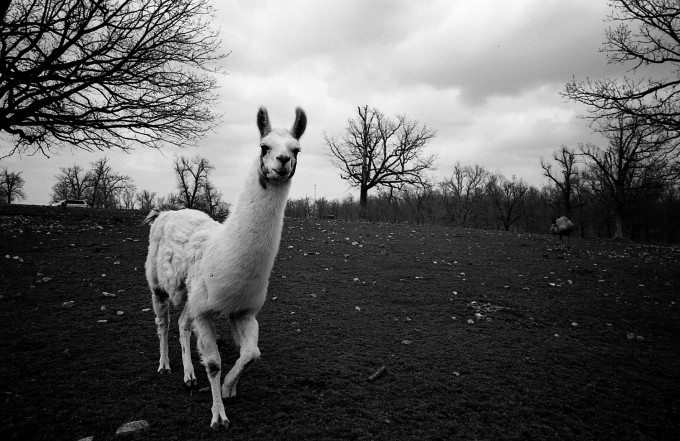
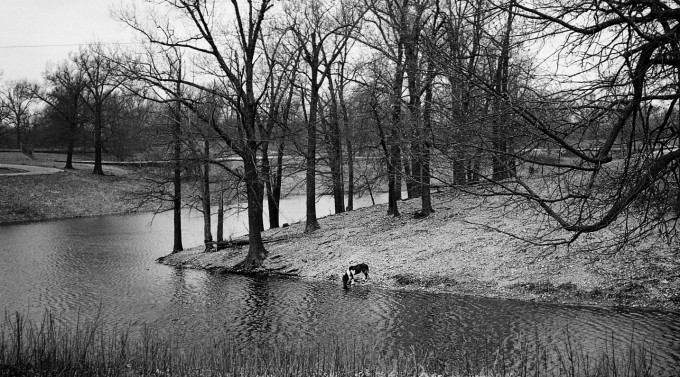
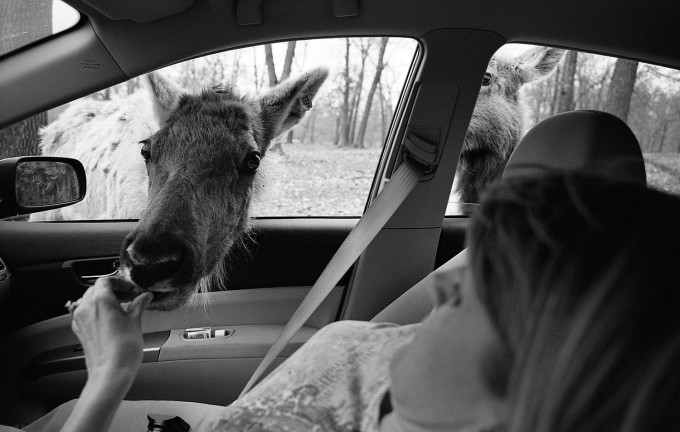
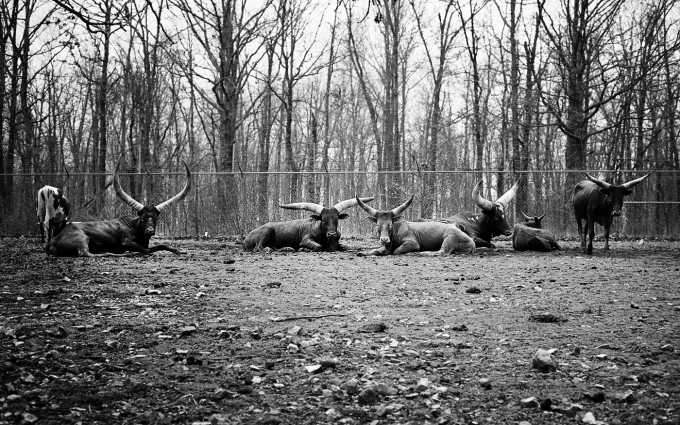


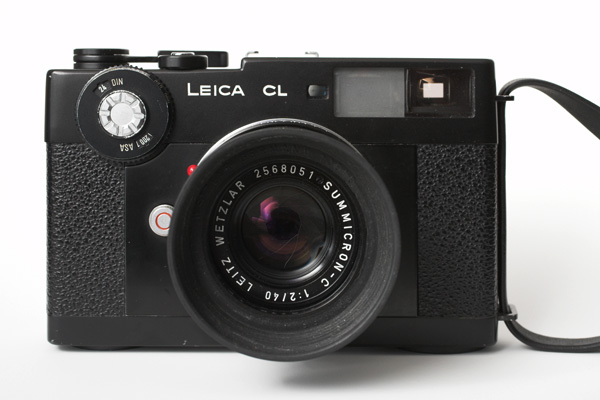
I like the A file better: less harsh; things fit together more. Nicer bokeh. The film one may be a little overexposed: original, or scanner?
I have to say that it’s very easy to have the B look from the A file ( for those who prefer film ) the opposite is not an option! Look at the inner shade of the pump.
Why would anyone have stopped using film in the first? I mean everyone goes on about film this and film that. For most of us real image makers nothing has changed in the last 10 years. Why all the fuss.
People are talking about film as if they had never used it before in their lives? Is everyone 10 years old on the net?
:-s
Steve,
Did you say what kind of film the pump picture was shot on?
I think I read everything above, but maybe I missed it.
Oops, sorry. Just saw your 12:27am post. Never mind.
Stefan: Your pictures look great. When you say “dslr-scanner”, do you mean you are “taking pictures” of your negs with a camera? Maybe using a bellows and slide copying attachment?
Some People asked how I digitize my 35mm films using my 5d, well here is the explanation:
http://www.flickr.com/photos/stefankonath/4504750278/
@ cidereye
Actually, I am using the recently released cheap Plustek 7400 for my 2500+ slides and 500+ negatives archiving project. This scanner has worked superbly well so far! And the amazing *true* resolution of 3800dpi is all one will need for 35mm:
http://www.filmscanner.info/en/PlustekOpticFilm7400.html
From a “Pro” perspective the only thing this guy doesn’t like about the 7400 is the absence of ICE. Understandable, because customers might complain about dust and scratches. But I would never use ICE because it slows down the process enormously and can rob detail, and all those many, many Kodachromes are not compatible with ICE anyway.
And in my opinion these imperfections, just like film grain, are part of the analog charm. I mean there are plug-ins that add this look to digital, so why remove it? 🙂
@ Kolja
Thanks for your helpful insight on Silverfast, much appreciated my friend! 🙂 I guess I should persevere with it like you say. I also have a Plustek 7200i which I found much easier to use with Silverfast being a dedicated 35mm scanner, I might just try the Plustek again on my laptop and use the Epson for MF/LF use.
@ Peter Bender
Thanks for your clarification! That’s very fast for a flatbed actually, but I guess that was with ICE turned off?
The *true* resolution (2300dpi, as measured by that German test site) at 9600dpi might still be on the low side, and when it comes to those scanners, at 4800dpi the true resolution is usually a little less. This appears to be the same crazy mega-pixel race we’ve seen with pocket cameras: extremely bloated files but only a small percentage of the mega-pixels is actual information.
My experience is that you need between 3000 – 4000 dpi *true* resolution to extract all detail from the slide or negative, depending on grain of the film and sharpness of the lens. Luckily, there are film-scanners today that have 3800dpi true resolution and cost less than 190 euros (a little more than $200)….
@Kolja
Just to correct what I was saying. It took around 50 minutes to scan 24 slides (4 strips of 6) at 9600dpi on the V700, so approx 2 minutes each. I know that 9600 dpi is over the top but I simply wanted to check how long it would take and I was impressed that it was that quick and such great quality. I have dropped back to 4800 dpi and it’s around 1 min for each slide. I’ll keep playing with the V700 and look forward to sharing experiences but it appears to be a great device. Cheers, Peter
Oh gosh… another celluloid orgy… 😀
LourensJ, purists will tell you that converting colour film to B&W will not give you the grain, tonality or “feel” of real B&W film, whether that is true or not is in the eye of the beholder I think. On the plus side, with colour film ICE dust removal works, on real silver B&W film, it does not, which for me is a reason not to shoot “real” B&W film. You can get B&W film which is processed like colour (Kodak BW400CN, Ilford XP2, Fujifilm Neopan 400CN) so it’s processed same as your usual negatives, but is in B&W and ICE works.
@cidereye
Yes, SilverFast has an unusual user interface and but once you get the hang of it (takes many test scans), it provides great results in a minimum amount of time. I tested VueScan briefly and it seems like a very capable software, but I were not able to get better results. So I continued to use SilverFast that came with my film scanner and have no reason to regret it after so many scans. With my cheap film scanner I can get film grain as sharp and large as tennis balls at max. resolution setting :). So far, lens blur and film grain have always been the limiting factor…
@Steve
Actually I saw that the German guy who tests the true resolution of scanners and many other relevant things has an English website:
http://www.filmscanner.info/en/EpsonPerfectionV700Photo.html
Be aware that he sells all these scanners too, so there is always a risk for biased info. But I can confirm his findings that even a cheap film scanner gives better results much faster if you are only into 35mm.
Steve, I’m with you about film and I think a lot of Leica users are using film more and more. But there is one film format that trumps them all and that is 4×5 or 8×10 film. You can scan 4×5 negs on your Epson v700 and a quick look over at flickr at the large format images will certainly get you interest. Cheap initial cost of entry. I plan to do all my serious landscape and portrait work in large format and keep my M8 for travel and street. In some ways, as your comparisons show 35mm as a format, has a boundary in terms of image quality. I think we are close to that now and I don’t really see that a further investment financially would bring me a measurable gain in IQ – large format on the other hand….
I’ll tell you what I’d like to see Steve if you do indeed get the Epson V700 is a full guide on scanning with VueScan for it, I just wish I could get a decent workflow using it myself. Silverfast interface is just so all over the place I end up using Epson Scan all the time but know from what people say that VueScan really pulls the detail outta film on the V700 if used correctly.
Why Hamrick themselves have not yet produced a proper guide for using this popular scanner with their software is somewhat beyond me?!?
I love the look of the film shot (B), it has a natural transition in the definition of detail, more like what the human eye captures in real life. The comparison made me smile when I realized that this affect is what makes film so exciting. Ironically this softning of details is described as a fault of the current Summilux 35mm when used in digital photography, yet it is most pleasing to the observer in photography…maybe focus shift is a creative benefit of the lux’35 (OK I know it is an optic design fault, but that does not mean it is not useful)
I don’t know…I have used the Coolscans 5000/9000 and frankly my V750 (used with glass plates by betterscanning) have given me results that are just as satisfactory. I have 13×19 prints on Harman FB AI that look perfect from 35mm scanning. I can extract all the detail in the shadows that I need and I sometimes pull development slightly and add some contrast (if needed) in post processing.
All of these have been scanned with the V750 and a variety of film/developers…you tell me..
http://www.flickr.com/photos/leicaman/sets/72157623318963523/
And this with Kodachrome 25, not the easiest film to scan. These were scanned with Silverfast AI profile for KPA25
http://www.flickr.com/photos/leicaman/sets/72157623426141341/
From a scanning perspective, the only logical solution upward, at least for me (and if I ever have $13K to blow) is the Flextight X1. Aside from that, the V750 is doing a fine job.
For shooting b&w I remember reading that it is best to shoot and scan color-film and post-process it into b&w for best results. Is this true? And makes it any difference if you shoot with a filter (yellow) on the lens or applying this effect in post-process?
Good call on the V700 I think. I sometimes wish I’d got one instead of my 35mm only scanner, as it gives the options for medium format in the future, even panoramic shots, that kind of thing.
Steve:
The V700 is a great and extremely versatile product. But my experience is that I can scan 35mm at a higher *effective* resolution than what the V700 is capable of with a dedicated 35mm film scanners that costs less than half the amount of what the V700 costs. A guy in Germany (slides were extremely popular in Germany btw.) measured that the V700 has an *actual* resolution of about 2300dpi. This is extremely good for a flatbed scanner, but cheap 35mm scanners already have up to 3800dpi actual resolution!
And my scan time is just below one (!) minute (and not well under 1 hour, like Peter Bender said 🙂 ). I learned that there are many things to consider and it took me quite a few weeks and many test scans to reach satisfying results. But after more than 1000 archived photos it is still great fun…
@ Stefan. That is a very interesting technique you are using with some great results. I like this work around solution.
My way of scanning my Leica negatives: Canon 5d + Macro Lens + Lightbox + tripod
I own a Epson V750 pro with filmholders from betterscanning.com but the results from my “DSLR-Scanner” are MUCH better. The resolution is much higher and it is able to “scan” even the darkest part of any slide which the Epson can not. The Epson is OK for medium and large format negatives but forget it for 35mm Film and slides with dark parts…
Samples:
http://www.flickr.com/photos/stefankonath/sets/72157623459588678/
PS… is it just me again or do both files look kinda blue-ish?…
High-end digital vs high-end film, great comparison Steve.
I also picked B as film and I think A from the M9 looks better. Sharper and more detailed. The handle just leaps out at you. The threaded joint between the pipe and pump is clearly visible on the digital image and not on the scanned film image.
While shot with the same lens and aperture, the difference between background blur might come from the difference the rear lens element and the film vs sensor?
But even when you prefer film, this begs the question, why go through all the hassle of film when the results are this close?…
Richard.
So which type film was it?
I shoot a fair amount of film, and I was quite honestly surprised by which was the film. That makes me think it’s time to upgrade my scanner in the near future. Based on my experience with the Epson 2450, I said A. I was surprised how sharp the pump was in the film shot.
Steve, we can share our learning experiences with the Epson V700. I picked up a used one in fantastic condition on eBay last week and spent a large chunk of the Easter break getting know it. I was able to scan 24 x 35mm Velvia ISO 50 slides at 9600 dpi to TIFF in well under an hour. The only problem is that each file is approx 500 MB and 13,500 x 9,000 pixels. This was just to test the scanner and I have to say the results are outstanding with the exception of any dust that happens to still be on the glass or the negative. Still it’s easily removed with the band-aid tool in Photoshop. I can’t imagine ever needing this size but it is nice to know the scanner can do it within a matter of minutes. I do intend to print one of the shots on A1 to see what it looks like. Will let you know the results. I’m also about to pull the trigger on a Zeiss Ikon. I used one a couple of weeks ago and think they’re fantastic value for money and I can use all my M mount glass. Cheers, Peter
Steve, ever thought of loading up the M6 with velvia and take a stroll in the twilight?
magic. all the way.
Christian, thanks for the comments. Also, I agree! Lets shoot what we have. Digital…film…neither is better really, just different. Me, I actually prefer the look of film over digital but love the convenience of digital and the amazing details and MF look of the M9 files. Thanks for all of the votes and comments so far! Ill post the results in about an hour or so!
After a few seconds looking at the pictures it was clear to me that B must be the scan from film and A must be the digital file. So that was my vote and I was glad to read that the majority had guessed the same.
But what surprised me was how many people said they liked B better than A. Maybe I have not looked at film pictures as much as these guys (so my eye is not used to this “look of film”), that’s why I personally prefer the crisp detail of picture A. With some slight post processing, I guess you could make picture A even better (yes, the shadows a tiny bit darker, the saturation of colors a little bit higher…)
@ Kolja and Steve:
PLEASE post an extensive article how to best use scanners. Highly interesting and relevant.
@ Everybody:
Brothers, please stop fighting. We do not need to debate whether film or digital is “better”, both are very good and have strengths and weaknesses. Just use whatever you like to make the pictures you like….. and then SHARE your pictures, so we can all enjoy them.
kindest greetings
christian
Steve – what film did you use for that shot?
on second thoughts, can I have the pump in A and the background, specifically the black, in B ?
B is film: A is much sharper in the details – if that has been scanned then it’s a bloody good scanner……… or to put it another way, if B is the digital then there is a world of difference between the cameras.
A digital
I think B is the film though I initially voted for A. I thought A had a bit more sharpness, but B had the darks that film shows. To me the pop is in B. It took me a while to see this though. I like both iimages though.
We tend to go on and on about which medium is better – film or digital. I think our preferences lie in how we see. Film tends to have smoother tonal transitions both because the medium responds to light on a curve and film is more three dimensional (silver halides/dyes suspended in a gelatinous coating). Digital is far more abrupt both because of the linear response of the sensor and the flatness of the ccd/cmos. Smooth and soft(er) or edgy and sharp(er), it’s a matter of taste. Why not shoot both?
Looks like “B” to me but then again we can have this debate all day. Film is still the defacto standard by which all others are judged, especially if you want to evaluate and test lens performance.
@Kolja
It would be great if you could write tutorial for scanning negatives! I just bought V700, as I need to scan both negatives and photos, but I am still delaying to start this business, and some nice tutorial or advice material would be of great help…
I’m guessing B is film based on the color of the folliage/leaves.
Granted, the film was scanned digitally, and as a V500 owner, I know the scan results depend on what your settings are, the software, and in Epson Scan software, whether you check off (and on) the “backlit correction.”
That said, I usually find that digital sensors don’t record the color, green, too well. Greens are usually over-saturated and much of the subtle details–particularly the warm, yellow tones are mushed and lost within the super saturated greeen. I guess we’ll see the results tonight!
I will guess A because of the much better shadow details. When are you going to post the answer?
Actually, I am in the middle of scanning all my 2500+ slides and 500+ negatives from almost 50 years. After more than 1000 scanned film images I can say that there are quite a few things to consider and that I would never use a flatbed scanner for anything else but very occasional 35mm scanning or larger formats.
If there is an interest, I would be happy to write an article (and of course share it via this site) how much fun (and actually comparably inexpensive) it can be to scan a serious amount of slides and negatives.
Just contact me through fb if you have any quetions upfront, Steve:
http://www.facebook.com/willimzik
If B is the M9, better throw M9 away. It is supposed to have no anti-alias filter 🙂
I’d say B is from film, and the lack of resolution is because of a cheapo scanner, flatbed even. Higher model Epson V700 can help, but nothing like a Nikon9000, in the real world.
It’s amazing how high the resolution and sharpness is when printed traditionally. IMHO, don’t waste time on film when it is not going to be printed traditionally. As Ashwin noted, the scan can be replicated with good pp. But the traditional print character and quality is a different league, and it shows exactly the quality of the lens, film, enlarger lens, paper, plus developing chemicals. Even the standard ones used by photo shops long time ago resulted in stunning quality.
I haven’t looked at the 100% crops, but I don’t need to. You can see the difference at the macro scale. The film handles the shadows so much better. Look at the improved shadow detail in B. That was my first give away. I am sure at 100% I could see some grain in B, but the shadows give it away.
I think it’s totally subjective when it comes to viewing these sort of thing out of character, i.e. Film is/was made to be printed and not scanned to be viewed. Now this is most certainly *not* a criticism because even I know we have no other choice in the matter than scan film and that it’s the only way to view it on the www and our computer screens but nothing beats a wet darkroom print from film as it was intended. By the way the film shot was B, never needed to look at the answers to see that, honest. LOL 😀
Hey Steve, out of interest as an Epson V700 owner myself just wondering why you were thinking on the V750 over the V700. When I purchased mine I considered both but the only advantage I saw with the V750 was shooting a lot of high quality MF or LF and the V750’s ability to use the fluid mount but AFAIK you can also buy this tool and use it on the V700. Anyway that aside if it was me buying again I wouldn’t buy an Epson and would also go your preferred route of a mint Nikon Coolscan, as good as these flatbed scanners are they are still not quite in the same league as the Nikon’s. JM2C. 🙂
hmm B but it’s hard to see the diff
I would have to say B as it looks less resolution than A and has a certain glow and grain that film produces.
I chose B as film due to the reduced detail in the pump itself. Specifically where the pipe mates with the base of the pump the threads are almost lost. In addition, image A has the ultra sharp (almost fake) razor edge between the pipe and the background. It would be interesting to see if there are any differences between these images once Steve gets his scanning technique and equipment dialed in.
Paul
At 100% the digital files will always appear sharper than your film scans, you are looking at the original data. This is due to the scanner in part, but also due to the fact that digital images just ARE a certain size, and a scan is really a copy, which is always of lesser quality than the original in the analogue world. Enlarging digital files is not at all like enlarging a piece of film. A digital file out of the M9 is about as good as a 645 negative, within it’s size constraints. Like if you were to make two 8x10s you would probably see little difference, with the edge going to the M9 for it’s smoothness. If you were to make two 11x14s the M9 would retain that detail and have little if any quality loss, while the 35mm negative would start looking grainy. However, as weird as this may sound, if you were to make two 16x20s or larger, the 35mm negative would make a comeback and withstand the enlargement to a greater degree (especially if the taking lens was a Leica one). And this is even more true for medium format negatives, where my Hasselblad negatives start blowing DSLR files out of the water only around 16×16. Under that it’s a toss up, and film has grain where as my D700 files hardly even have noise until ISO1600….but they’re etherial digital files and they won’t hold up to extreme enlargement (and they’re not tri-x).
I own a Nikon Coolscan V and an Epson V700 (which is nearly identical to the V750). Steve, if you want me to send you some sample files I sure can. For 35mm the Nikon has the edge, but not as great as I had hoped when I bought it, unless I’m scanning chrome, in which case I am frequently wowed. The Nikon is also slow as molasses, where as the Epson can multiple frames from 4 strips in one sitting.
B is Film. Grain gives it away. The M9 files are smoother. Detail is impressive in both. B looks more processed, given the inherent properties of the film that you have used.
A is digital….
Interesting thing as that with Nik Efex, A can be turned into B (or a close approximation) relatively readily….
I am a firm believer that film is still king to extract the best out of Leica glass. The B shot, even with any scanning issues, has a lot of detail that A does not have. Look at the fitting and the rust on the thread connecting two: With A, it is just not there. You can fix white balance and color until the cows come home but the detail, to my eyes, isn’t there. I am sure it can be manipulated enough to look fine, especially for a big print but let’s face it, not many here do that. The force is still strong with film! 🙂
Depth of field seems more important in A.
M9?
DS
I picked B also and wonder if we will all look like fools. I think it would have been easier to figure out with black and white. A looks like it has more sharpening to it, but I guess you could do that to film. Hmm.
I am with Chris’ evaluation – the grain gave B away as film (to my eyes). I do, however, prefer the smoother digital version – because i can opt OUT of the grain should I choose or add it in if it will contribute to the image.
Looks like the digital file is A. It lacks the contrast typical of a RAW file before contrast enhancement, and like the previous comparison you’ve posted, and has more detail in the shadows.
B seems to have more glow, and is my prefered image. B is the film.
Honestly, no clue, but (B) looks indeed much better. Just bought a cheapo Olympus OM10 with a f1.8 50mm and some Ilford Hp5+ bw (can’t afford a Leica yet). Now I only have to wait 2 weeks until the drug store developed the film…
Anyway, why do I have the strange feeling that reading this awesome site is getting expensive…
agree with Max, B is film. I see grain there
I like the one on the right better (I voted it was film for what it is worth). I prefer the colours and exposure. That said, it is a darn close call!
That’s easy…the one that looks better :)) B!
Kidding aside, I see B as having more 3D quualities, better color, and definition. The rust looks more like rust, the way it should be..etc. Ektar 100?